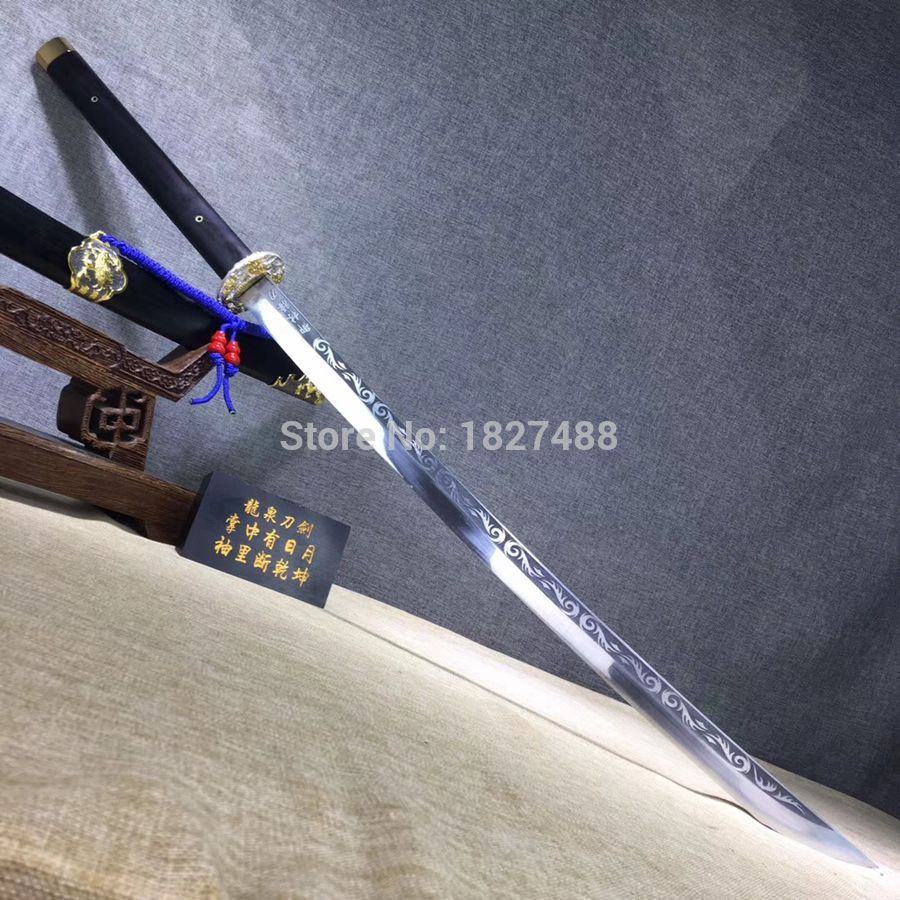

The hardness of the 1095 Carbon Steel katana is inherited from the Steel material used for the forgery. These swords are easier to sharpen and they do not need to have a thick layer of what the swords men call “meat” the edge keep its sharpness for long time. It is important to notice that Clay tempered 1095 carbon steel katana are resistant to corrosion and are more resistant to oxidation they are perhaps stainless. The durability and the Edge Sharpness are reinforced by the Differential hardening process. This characteristic induces an excellent durability for the 1095 Carbon steel Swords. The hardness of the Steel makes the forging process into sword a tough operation and increases the price value of the resulting piece, if handmade. For outdoor displays and shows, 1095 Carbon Steel katanas are more suitable than the 10 Carbon steel Katanas the last one is already preferred when it is about decorative use. The Swords are intended to regular use and very frequent Dojo cuts. Although, the acquired durability which excels the durability of the Stainless Steel, makes Carbon Steel more preferred for making Swords.ġ095 carbon steel katana inherits the hardness and the toughness of the Carbon Steel material. The Carbon element makes the obtained steel relatively resistant to oxidation even if it has no chromium to be considered stainless. But among the Carbon Steels, 1095 is the hardest and perhaps the best choice for making swords intended to last longer while being roughly and frequently used. The 1095 Carbon Steel comes to be softer than the Stainless Steel, yet it is easier to handle, durable and more resistant. Heat treatment is to be operated very carefully because it is a delicate operation: improper treatment can result in loss of the carbon fraction and therefore the non-obtaining of the martensite, which can result in the loss of the whole material. Steel Types are usually produced on demand to make decorative pieces or weapons and Samurai utilities. The quantity of each component is determined by the desired Steel type and the intended use. The old method to generate Carbon Steel is still employed: mixing iron powder with charcoal within a clay tub. The heat treatment must be conducted delicately because the carbon tends to leak at certain temperature and if improperly heat treated. This carbon percentage results in a hard steel, which hardly forged by hands. Actually, it is called very high carbon steel. Furthermore, sword maintenance becomes extremely important, because of the low corrosion resistance.ġ095 Carbon steel is carbon steel that contains %0.95 of Carbon. The sword is unforgiving if being wielded improperly. Since the durability of the sword is rather low in comparison to the other steels, the 1095 steel type is recommended to advanced swordsmen. On the other hand, they are more brittle. On the one hand, swords forged from 1095 high carbon steel take and keep an extremely sharp edge. This high carbon steel can be quenched to a hardness of HRc66. These swords require a perfect heat-treatment. Remember the bear blade price is different than a custom blade that is all put together.As this steel type nearly has 1% of carbon it is very hard. The drop-down menu on the custom page only has some of the most popular. If the description of the blades doesn't come up just click on the picture of the blades and then scroll down.Īlso this page has the complete blades that hand Bond offers. You can read about the various blade types in their advantage and disadvantage here.

I would strongly suggest going with the clay tempered version, which is slightly more than your stated budget. They have pre-made ready to go swords you may like or you can custom build one.Īlthough, if you're going for 1095.


 0 kommentar(er)
0 kommentar(er)
